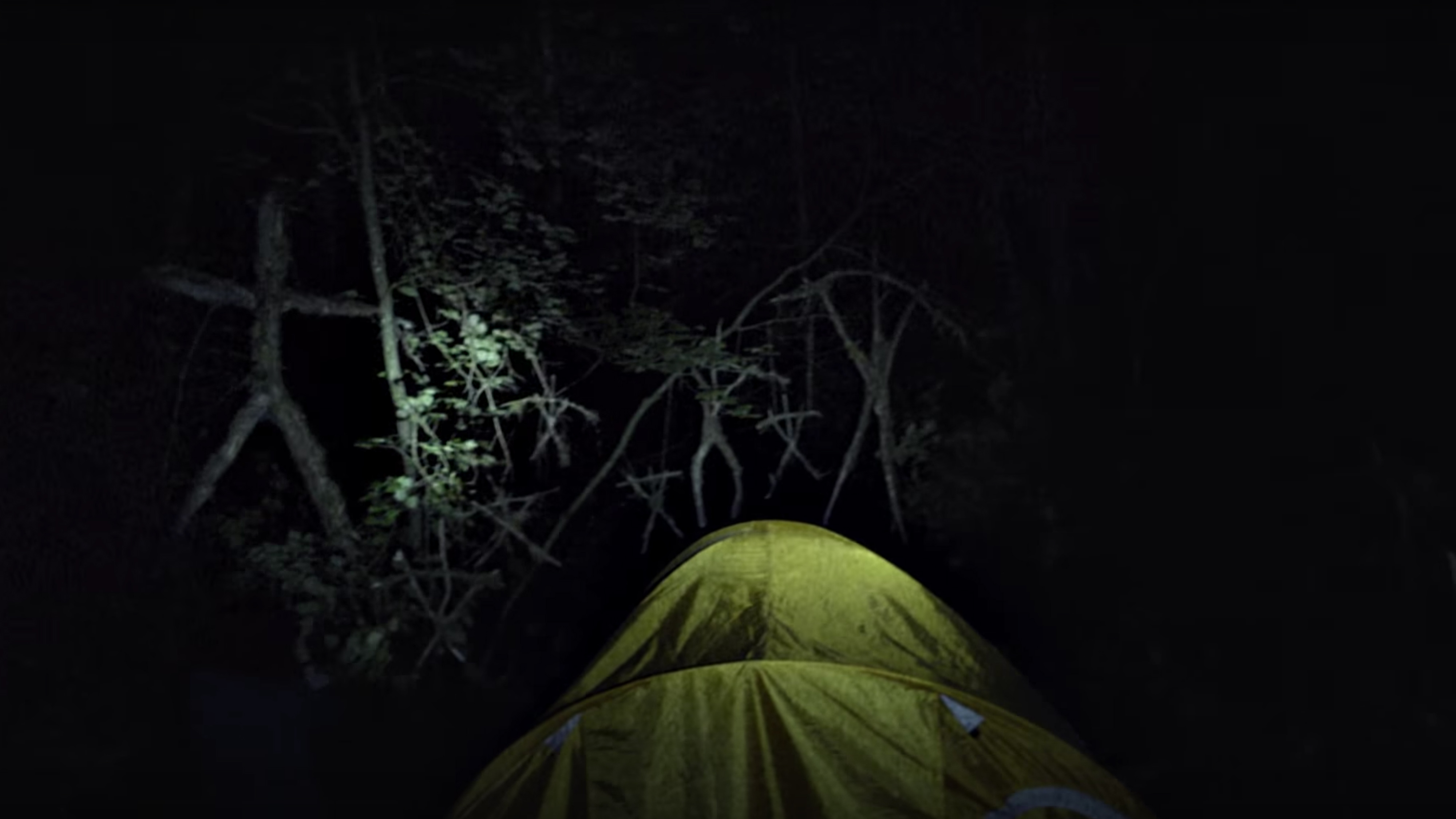Since 1999’s The Blair Witch Project brought the genre to the mainstream, no other found-footage film has been able to convince the audience that they’re watching something real. It’s a built-in deficit for the genre, but writer/director team Simon Barrett and Adam Wingard (You’re Next, The Guest) use it to their advantage, infusing BWP’s sequel, Blair Witch, with memorable dialogue, jump scares, and set pieces that would have tilted their hand if they were still pretending the story was true.
The result is a sequel that’s far more entertaining than its predecessor. Because once the original Blair Witch Project stops being real, it stops being effective, and the understated action and dialogue—meant to seem realistic—suddenly become kind of boring. Blair Witch escapes that fate by being an entirely different type of film. It’s found footage in format, but not in tone, which means diehard BWP fans aren’t likely to care for it, while those who were unimpressed by the original beyond its cultural and marketing significance will probably be pleasantly surprised.
The premise is fairly straightforward: James (James Allen McCune) ventures into the woods to find out what happened to his sister Heather, who disappeared in the first film (she’s the one who delivers the infamous runny-nosed monologue, in case it’s been a while). His friend Lisa (Callie Hernandez) decides to film it for her documentary class, and James’s friends Peter (Brandon Scott) and Ashley (Corbin Reid) tag along for some reason. Also, local urban-legend enthusiasts Lane (Wes Robinson) and Talia (Valorie Curry) decide to come too—presumably because six people lost in the woods makes for better entertainment than four people lost in the woods.
Although Blair Witch has roughly the same set up as the original, it has the added advantage of modern technology, which it employs to make continuous filming in a life-or-death situation slightly more plausible. In one scene, Lisa makes a point of telling the other characters that the built-in GPS feature on their mini earpiece camera will only work if the camera is on (hey, I did say slightly more plausible). It’s a cheesy but clever solution to the most frequent criticism of the genre—even if it did come seventeen years after people stopped expecting found footage to be real.
Despite its strengths, Blair Witch never stops feeling micromanaged.
It’s one of those earpiece cameras that captures what is hands down the best moment in the film. I won’t spoil it, but here’s a hint: they finally manage to make those yarn and twig stick figures scary. Further, it’s the only scene that comes anywhere near the level of Wingard and Barrett’s previous work. That’s because Blair Witch never stops feeling micromanaged and babysat—like maybe Lionsgate still doesn’t fully trust Wingard and Barrett after You’re Next underperformed in 2013 (despite being arguably the best horror film in a year of strong contenders).
The biggest tell is the underdeveloped female lead. Character development is usually the pair’s strong suit, and Barrett has always had a knack for writing women, but in a cast of six, Blair Witch boasts maybe two fully realized characters. Typical studio fare: safe and vanilla (or pumpkin spice, as the case may be). All in all, Blair Witch is good; it’s a perfectly acceptable way to spend a Friday night. But I would have really loved to see Wingard and Barrett’s version—that could have been great. FL









